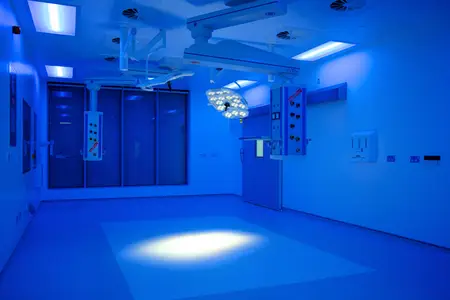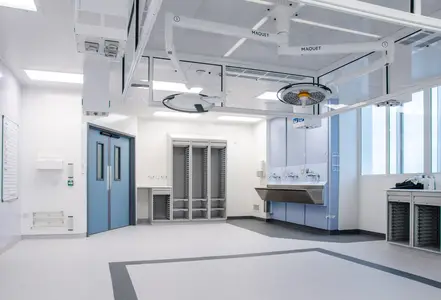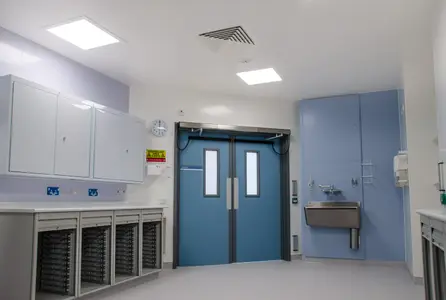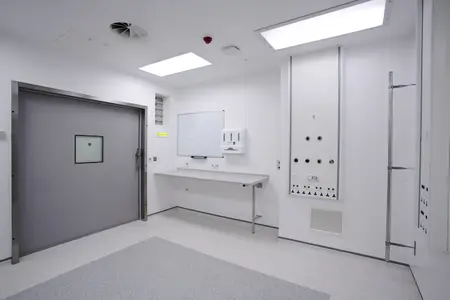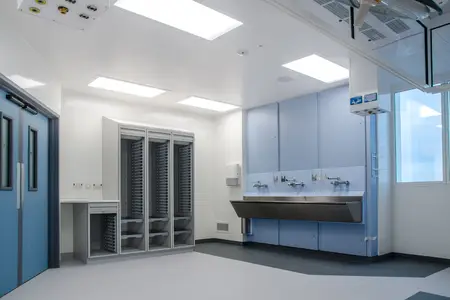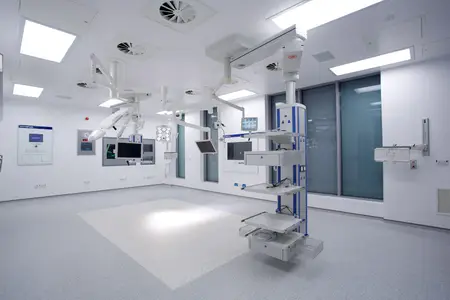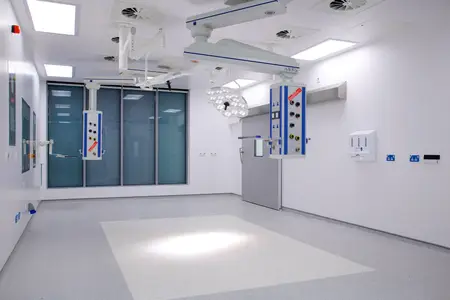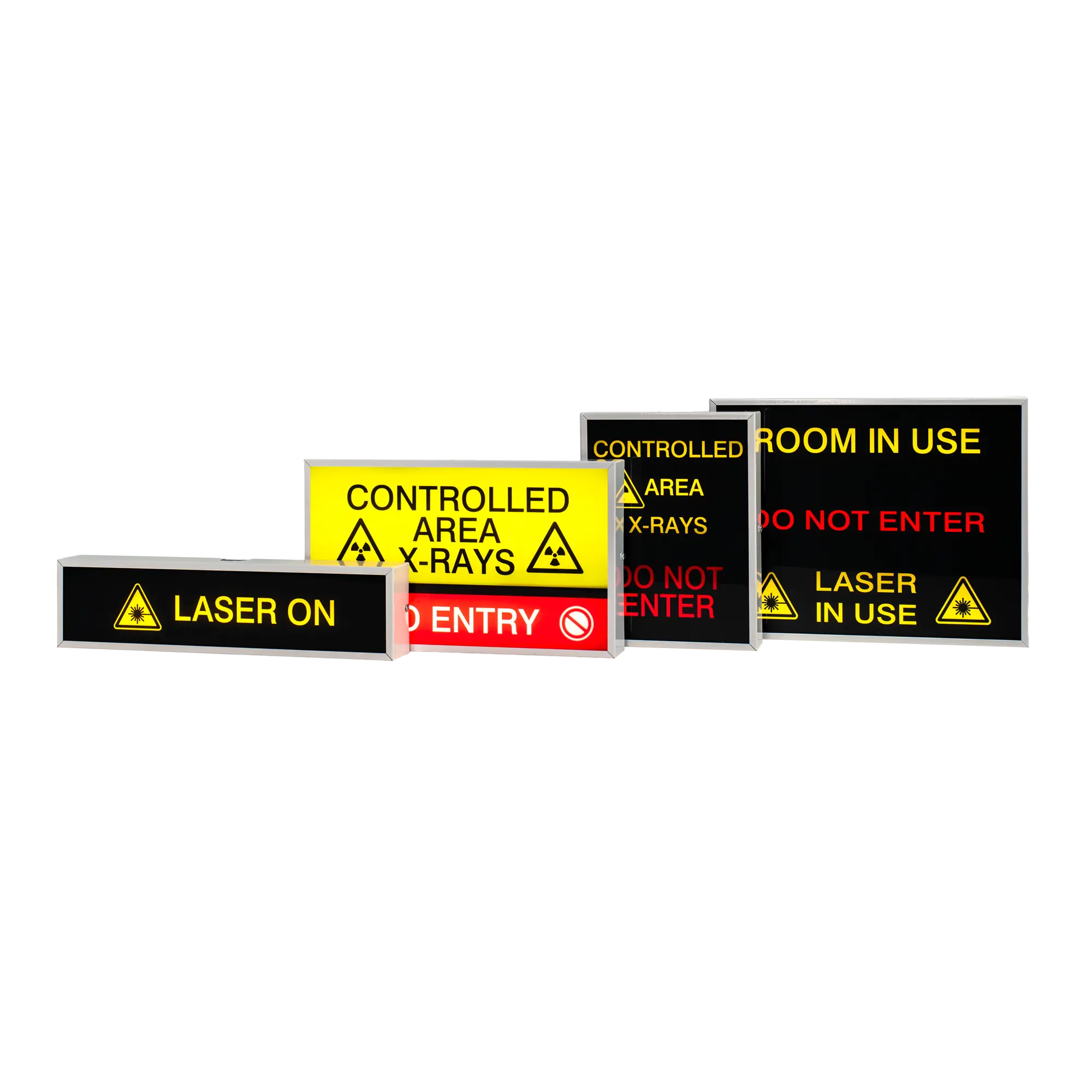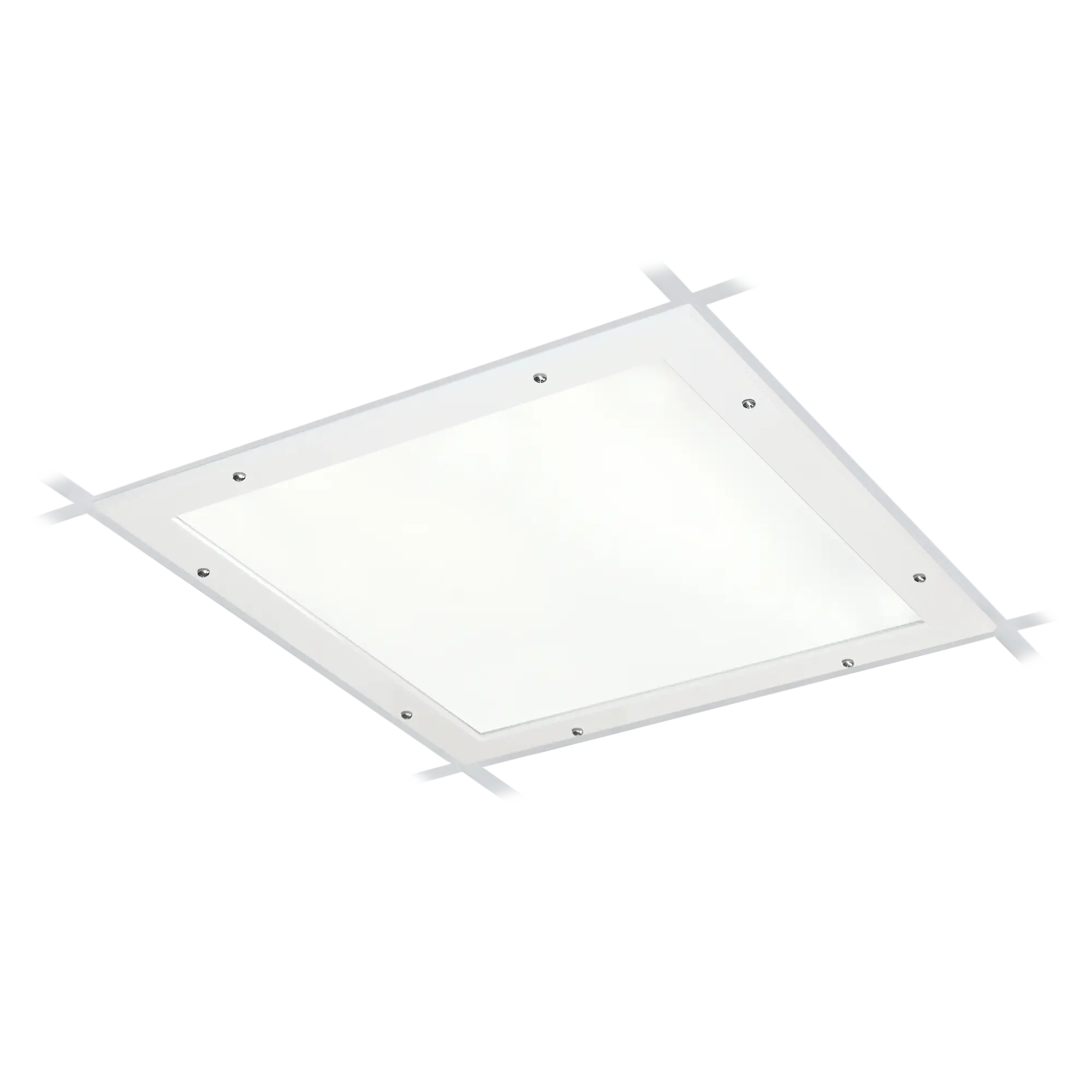Operating Theatres & Clinical Areas
Operating theatres and their associated clinical areas are probably the most important and specialised areas within a hospital. The functionality of an operating theatre is clearly understood, but less so the definition of a clinical area. CIBSE: SLL Lighting Guide 2 - Hospitals and Health Care Buildings, defines clinical areas as areas or rooms in which surgical, clinical or medical procedures are carried out, usually by a surgeon or doctor.
In all areas where an operative procedure is carried out, it will be performed under dedicated surgical LED task lighting, usually ceiling mounted, which will, in itself, provide the full lighting quota required. All other installed luminaires are only needed to provide general or room ambient lighting.
The general lighting should provide sufficient light for the critical examination of patients, support operative procedures and for the use of life support apparatus. CIBSE: SLL Lighting Guide 2 - Hospitals and Health Care Buildings 2019 states that 1000 lux is generally required for the main operating theatre background lighting.
Operative or clinical procedures carried out within the ophthalmic, ear, nose and throat (ENT) areas, and micro-surgery units may require much lower levels of general illuminance because of remote operative procedures. Typically values of between 10 and 50 lux are recommended and this should be provided by the main lighting system operating in a dimmed mode. Dimming also provides a degree of flexibility that is increasingly required in these clinical areas allowing multifunctional use. It is also important to note that the general lighting is required to provide both horizontal and vertical illuminance.
Vertical illuminance is required for good visibility of swab count racks and other wall-mounted equipment. Like cleanrooms, clinical areas are controlled environments where medical procedures are carried out. It is therefore very important that the concentration of airborne particles is controlled to within specified limits.
Luminaires designed for use within these areas should be IP65 or IP54. Effective IP seals should be employed between the luminaires and the room’s internal surface.
Lighting Requirements
| Location | Maintained illuminance (lux) | Notes |
|---|---|---|
| Operating table (directed locally) | 10000 - 160000 | Local switching (auto/manual) |
| Operating theatre (general lighting) | 1000 | Dimming (auto/manual) |
| All other places where work is carried out | ≥ 500 but ≤ 1000 | Dimming (auto/manual) |
